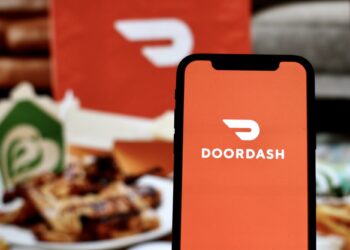For 12 years Andrei Rebrov managed infrastructure and operations at Scentbird, a perfume subscription company he co-founded in 2013. He learned the importance of acquiring the right subscribers, those who stay and generate lifetime value for the business.
The key, he says, was accurate, timely analytics to assess channels, creative, and promos. Finsi, his new company, provides those metrics, enabling merchants to predict a prospect’s value over the long term.
In our recent conversation, I asked Andrei to share acquisition tactics, churn avoidance, product selection, and more.
Our entire audio dialog is embedded below. The transcript is edited for length and clarity.
Eric Bandholz: Tell our listeners who you are and what you do.
Andrei Rebrov: I’m the co-founder of Finsi, an analytics platform for subscription-based businesses, launched in 2024. We help companies acquire and retain profitable subscribers.
Before that, I spent 12 years building and scaling Scentbird, a perfume subscription service, where I served as CTO.
I handled much of the engineering, including coding the website, building back-office systems, and managing online payments and warehouse infrastructure. We launched in August 2014 and surpassed 1 million subscribers by the end of 2024. I left the company in March 2025.
We started Scentbird alongside subscription pioneers such as cosmetic brands Ipsy and Birchbox, and apparel provider Fabletics. We were inspired by Warby Parker’s “try before you buy” model, and we applied the concept to fragrances. We built our own platform, which gave us flexibility and scalability over the years.
We began with fragrances from other brands. Some were hesitant, but over time, Scentbird became a mutually beneficial partner, giving brands access to younger audiences, online shoppers, and consumers who wanted to try before committing to a full bottle. Our website’s motto became: “Date your fragrance before you marry it.”
Customers could select their monthly fragrances or receive a default “fragrance of the month.” Thousands chose the default, enabling the rapid collection of reviews and insights that brands could use to refine formulas, marketing copy, and strategies.
Subscription businesses require nonstop acquisition to stay in place. The challenge isn’t just reducing churn; it’s acquiring customers who will stay. Most SaaS companies separate acquisition and retention teams, which can create disconnects. Success comes from collaboration — aligning acquisition, retention, and operations — so the entire company functions as one system. Increasing customer acquisition spend is usually worthwhile if it improves lifetime value.
We were vertically integrated, which meant that fulfillment, logistics, and marketing had to move together. If one team outpaced the others, something would break quickly.
Bandholz: What drives profitable acquisition?
Rebrov: Accurate analytics. It’s one of the hardest parts of running a subscription business, and it’s a big reason I started Finsi. At Scentbird, we invested early in analytics because every acquisition channel behaves differently. Each has its own lifetime value, payback period, and acquisition cost, so analyzing them separately was essential.
We needed to understand what customers purchased through each channel and how these purchases affected retention. Traditional LTV calculations rely on historical data, which is typically dated. That delay makes it impossible to know if current strategies are working. To solve this, we built predictive LTV models that provided early insight — often within a month — so we could gauge the impact of new creatives and A/B tests faster.
For example, we tested a two-product-per-month plan. It initially lowered conversion rates, but predictive data revealed much stronger long-term value. That insight helped justify warehouse adjustments for the new fulfillment process.
We explored various customer acquisition channels. TikTok Shops became a top performer. Since it integrated only through Shopify, we built a faceless Shopify store connected to TikTok, routed orders through it, and shipped sample bundles to introduce users to the Scentbird experience before converting them into subscribers.
We grandfathered long-term subscribers to reward loyalty. Some stayed seven or eight years, though many churned within 12 months. Early, accurate analytics made it possible to balance growth and retention effectively.
Bandholz: What size company benefits from Finsi’s analytics?
Rebrov: It’s less about size and more about the growth stage. Each stage faces different challenges. One of the biggest is cash flow. Every physical SKU has its own lead time, so if inventory takes three months, companies must accurately forecast demand, churn, and cash flow. For early-stage brands, those with annual revenue under $10 million, we help stabilize operations and predict cash needs.
At $10 to $50 million, segmentation becomes crucial: identifying lapsed customers for personalized win-backs and recognizing high-value customers early to offer premium experiences.
At $50 to $150 million, the focus shifts to eliminating surprises and aligning systems, ensuring promotions run correctly and teams understand how one decision impacts another. Larger brands often expand into new product lines and face the same scaling issues again. Across all stages, success depends on accurate, unified data to guide smarter decisions.
Effective retention depends on understanding why customers cancel.
Bandholz: How do you do that?
Rebrov: We usually start with surveys to gather both structured and unstructured feedback. Multiple-choice questions provide quantifiable insights, but the real value lies in open-ended responses, where customers share their personal stories. Surveys let you reach thousands of people efficiently, but phone conversations are invaluable. Talking directly with customers often reveals unique motivations and use cases that spark creativity and guide product development.
Spending even 30 minutes on the phone with a few customers, especially loyal ones, can uncover more insights than analytics ever could.
Certain products naturally fit subscriptions. Examples are consumable supplements, protein powders, and snacks. But infrequently purchased goods are better suited for one-off sales.
Companies must decide early because it shapes their marketing strategy. For traditional ecommerce, profitability often depends on the first sale. You aim to cover acquisition, cost of goods, and shipping upfront, often by selling bundles.
For subscriptions, the focus shifts to lifetime value. Sellers can afford to lose money initially if they know the customer will stay long enough to become profitable. Predictive LTV helps qualify customers early and informs how much you can spend to acquire them.
Simplicity wins. Don’t confuse prospects with multiple purchase paths or offers. Ensure a “subscribe and save” offer is consistent and easy to understand.
The beauty of subscriptions lies in predictable cash flow. Yet rising acquisition costs make retention even more vital.
Bandholz: Where can people follow you, reach out to you, or hire your services?






